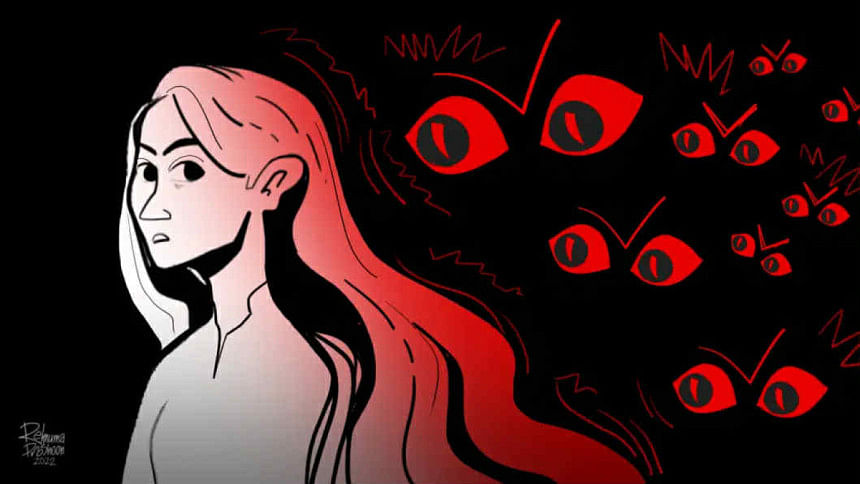The clip that keeps haunting her

Last week in Cumilla's Muradnagar, a 21-year-old woman was raped, tortured, and filmed. That video – showing her in a traumatically vulnerable moment – was then circulated online, not by just the criminals, but by us.
While outrage over the crime was swift and justified, what followed raises a deeply uncomfortable question. Why is it that we crave to see other people's trauma so much? Why else would these video clips go viral?
We often tell ourselves it's about "raising awareness." We say sharing the footage will push authorities to act faster. And yes, in some cases, public pressure does hasten government response. But let's not confuse that with justice. Justice doesn't require stripping someone of their privacy.
The moment that video went online, her assault changed form. From violence inflicted by men in a room, it became a spectacle consumed by thousands. Strangers knew her face, her voice, her screams. And every time the clip was viewed, every time someone commented on it or forwarded it, so did her abuse worsen.
The woman at the centre of it all was hounded by journalists and content creators. Her family home turned into a battleground of unwanted attention. Harassed and unable to bear the pressure, she had to flee. What began as a crime turned into a permanent sentence of shame and exposure.
What does that say about us?
We don't watch these videos to support victims – we watch them because of a morbid attraction for the macabre. Because they evoke reactions: anger, pity, horror. In a digital world where feelings are measured in emojis and views, someone's pain becomes social currency. It is perhaps the same reason that clips of violence gain significant traction.
But when this is about a brutalised woman, the significance is much greater for the woman. Once the clips spread, the damage becomes irreversible. The survivor becomes the "woman from that video." Not a name. Not a person. Just a symbol of trauma.
Even after the video is removed, the pain remains. Her dignity doesn't return with the deletion. People remember. People judge. She will always live with the fear of who has seen it – who still might.
We've normalised this cruelty. We've stopped seeing people in these stories. We see headlines. We see content. We forget that this isn't just a video – it's someone's worst moment, shared without consent, dissected without mercy.
And all of it reveals something far more frightening than a legal delay: we've built a culture where a woman must be seen suffering before we believe her. Where her pain must be public for justice to follow.
Every time we make such videos viral, we aren't helping, we're extending the violence. We're feeding the same system that allowed it to happen.
If we really care, we need to act differently. Respect her right to privacy. Protect her identity. Demand accountability – without broadcasting someone else's trauma.
So the next time one of these videos lands in your inbox or pops up on your feed – don't open it. Don't forward it. Don't add to the echo of her pain.

 For all latest news, follow The Daily Star's Google News channel.
For all latest news, follow The Daily Star's Google News channel. 




Comments